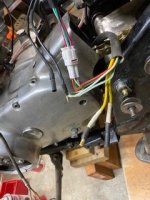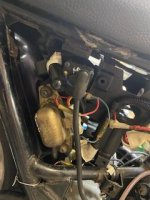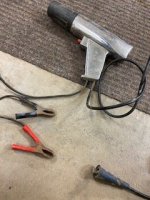Here's the best diagram of the relay(s) which resembles the physical layout and is color-coded.
View attachment 185900 o
It's shown in the unenergized state. One relay uses normally open contacts and the other uses normally closed contacts as you see. To energize it, 6v arrives on the yellow wire shown. The presence of the 6v is the signal that the generator is running. The 6v opens the relay labeled SR which turns off the started, and closes LR which turns on the lights. As soon as LR is closed, 12v appears on the downstream, lights, side of LR. That 12v is divided by the resistor you see and the resistance of the coil of LR to provide 6v on the coil of LR and keep LR turned on, even if the 6v on the yellow wire goes away. That is why the lights stay on if the engine stops, until you turn off the key. The diode keeps the voltage latching LR on from latching SR on which would defeat the purpose of SR.
The yellow wire(s) coming from the hbb are not to be confused with the yellow wire on the diagram. They are just the same color... Pictures of the hbb that I see appear to have three (not two) yellows coming out, which correspond to the three whites coming out of the stock generator, one for each of the three output phases of the generator. Bottom line, what you need to do is supply a steady 6v to the yellow in the diagram for as long as the generator is turning and only when the generator is turning. And it can't interfere with the operation of the generator. Doesn't matter how you do it. Measure voltages before hooking in of course to not overvoltage the relays





